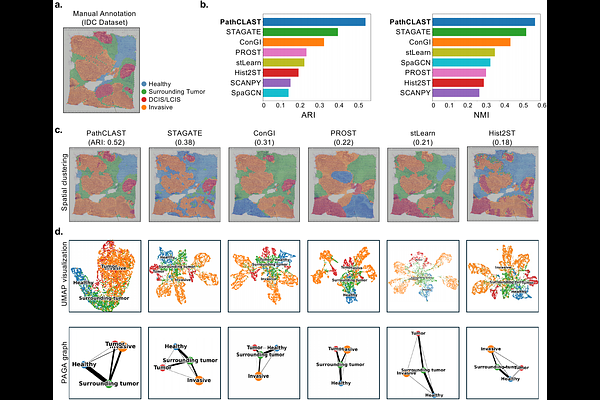PathCLAST: Pathway-Augmented Contrastive Learning with Attention for Spatial Transcriptomics

PathCLAST: Pathway-Augmented Contrastive Learning with Attention for Spatial Transcriptomics
Noh, M.; Lee, S.; Kim, S.; Lim, S.
AbstractMotivation: Spatial transcriptomics provides high-resolution insights into tissue architecture and disease progression. While recent computational methods have advanced spatial domain identification, many focus primarily on gene expression alone, which may limit biological interpretability and underexploit complementary data such as histological images and known gene-pathway associations. Results: We present PathCLAST (Pathway-Augmented Contrastive Learning with Attention for Spatial Transcriptomics), a novel framework that integrates gene expression, histopathological image features, and curated pathway graphs through a contrastive learning strategy. By embedding gene expression within biologically grounded pathway-level graphs and aligning them with histological features, PathCLAST enhances spatial domain resolution and provides interpretable attention scores over functional pathways. Across three benchmark datasets, PathCLAST consistently outperforms existing methods in clustering accuracy, achieving a 37% improvement over STAGATE on the IDC dataset and uncovers domain-specific signaling programs and spatial heterogeneity. Additional analyses of spatial autocorrelation and inter-domain crosstalk demonstrate its potential to reveal localized biological processes and tumor microenvironmental dynamics.